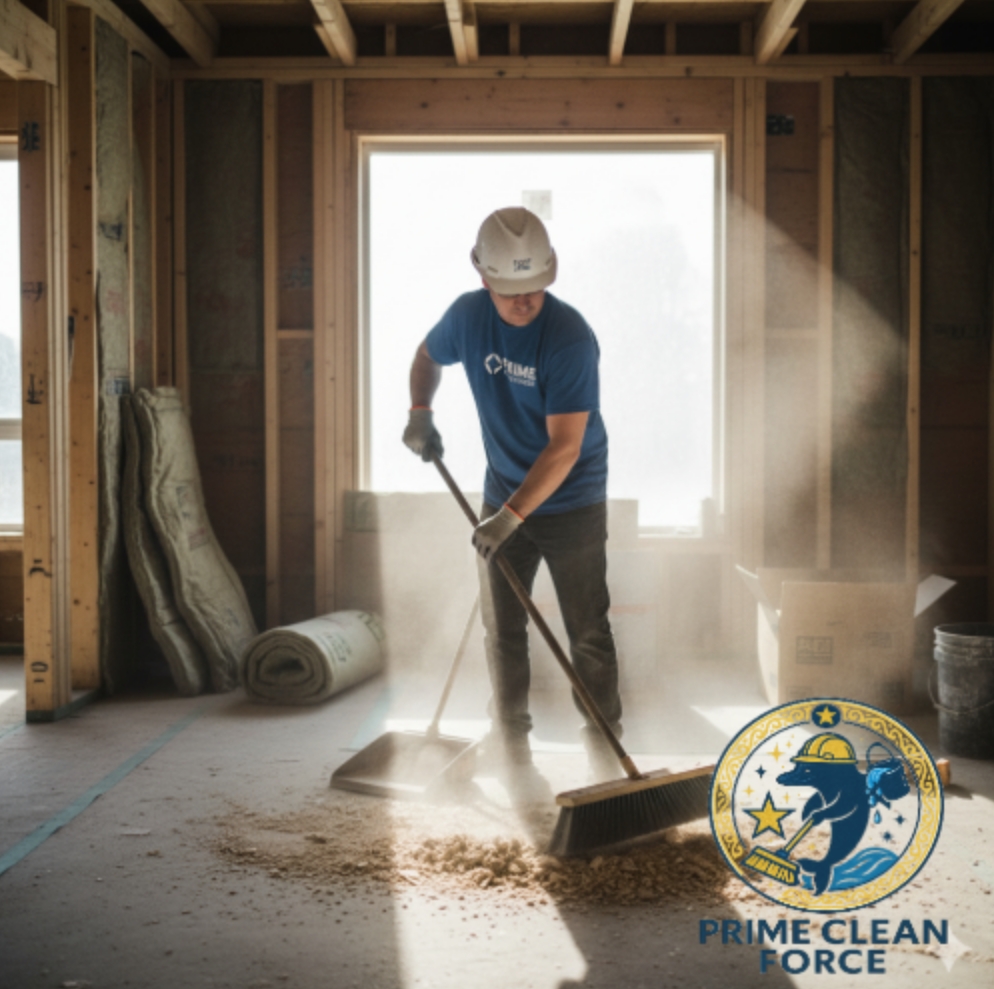For a general contractor in Atlanta's booming construction market, the project isn't finished when the last nail is driven. The true final step—and the one that determines client satisfaction and a smooth handover—is the post-construction cleanup. This isn't just a simple wipe-down; it's a meticulous, multi-phase process that transforms a dusty, debris-filled job site into a pristine, move-in-ready space.
A professional post-construction clean is critical for passing final inspections, ensuring occupant safety, and showcasing the quality of your work. This guide outlines the essential three-phase approach, the necessary tools, and the vital safety considerations, particularly regarding OSHA's silica dust standards, that every GC should build into their project timeline.

The Three Phases of Post-Construction Cleaning
A successful cleanup isn't a single event but a structured process. Breaking it down into three distinct phases ensures efficiency and prevents rework.
Phase 1: Rough Clean
This initial phase happens after the framing, plumbing, and electrical work is done but before the final finishes like flooring and painting begin. The goal is to create a safe, clean slate for the finishing trades.
- Debris Removal: Remove all large debris, including wood scraps, drywall pieces, insulation, and packaging materials.
- General Sweep: Perform a thorough sweep of all surfaces to remove the bulk of accumulated dirt and dust. This is often a "rough sweep" to clear the way for painters and flooring installers.
- Sticker and Film Removal: Begin the tedious process of removing stickers, labels, and protective plastic films from windows, doors, and fixtures.
Phase 2: Final Clean (or Detail Clean)
This is the most intensive phase, performed after all construction work is complete. It's a top-to-bottom detail clean designed to make the space ready for the final punch list inspection.
- Top-to-Bottom Dusting: Clean everything from the top down, starting with light fixtures, ceiling fans, ductwork, and the tops of cabinets.
- Wall and Surface Cleaning: Wipe down all walls, door frames, baseboards, and window sills. Clean the inside and outside of all cabinets and drawers.
- Kitchens & Bathrooms: Thoroughly clean and disinfect all countertops, sinks, toilets, showers, and tubs. Polish all fixtures.
- Window & Glass Cleaning: Clean all interior and exterior windows, removing any paint splatter, caulk, or sticker residue. Clean all mirrors and glass partitions until they are streak-free.
- Floor Cleaning: Vacuum all carpets and hard surfaces meticulously. Mop or scrub hard floors to remove all dust and grime.
Phase 3: Touch-Up Clean (or Punch List Clean)
This final, light cleaning occurs a day or two before the final client handover, after the punch list has been completed. It addresses any dust or smudges left behind by the final tradespeople, ensuring the property is in absolutely perfect condition for the new occupants.
- Final Dusting: A light dusting of all horizontal surfaces.
- Floor Touch-Up: A final vacuum of carpets and a light mop of hard floors.
- Smudge Removal: Wiping away any new fingerprints or smudges on glass, fixtures, and switch plates.
Safety First: OSHA and Silica Dust Compliance
One of the most significant hazards on a construction site is respirable crystalline silica—a fine dust created when cutting, grinding, or drilling materials like concrete, brick, and stone. This dust can cause serious lung disease.
OSHA's standard for respirable crystalline silica (29 CFR 1926.1153) requires employers to limit worker exposure. A key part of compliance is dust control. This means a post-construction cleaning crew cannot simply dry sweep or use compressed air to clean up silica dust, as this makes the dangerous particles airborne.
Professional cleaning crews must use methods that control the dust at its source:
- HEPA-Filtered Vacuums: Industrial vacuums equipped with HEPA filters are essential to capture fine dust particles without re-releasing them into the air.
- Wet Wiping/Mopping: Using damp cloths and mops to clean surfaces prevents dust from becoming airborne.
Hiring a professional cleaning contractor who is knowledgeable about these OSHA standards is crucial for maintaining a safe site and protecting your liability.
Essential Tool & Equipment List
A professional finish requires professional-grade equipment. A well-equipped cleaning team will arrive with:
- Industrial HEPA-filter vacuums (both backpack and shop-vac styles).
- Extension poles, ladders, and scaffolding to safely reach high areas.
- A variety of scrapers (plastic and metal) for removing paint, caulk, and glue.
- Microfiber cloths and mops for effective dust capture.
- Floor scrubbers or buffers for finishing hard-surface floors.
- Appropriate PPE, including N95 respirators, safety glasses, and gloves.
Partnering for a Perfect Finish
In the competitive Atlanta market, the quality of the final handover can define a contractor's reputation. Subcontracting the post-construction cleaning to a specialized, insured, and safety-conscious partner frees up your team to focus on their core trades and guarantees a professional result. A dedicated cleaning crew understands the unique challenges of construction dust and debris, and they have the systematic approach required to deliver a truly move-in-ready property on schedule.
Ensure a Flawless Handover for Your Next Atlanta Project
Don't let the final clean become a bottleneck. Prime Clean Force specializes in comprehensive, multi-phase post-construction cleaning for general contractors across the Atlanta metro area. We are trained in OSHA safety standards and equipped for any size project. Contact us today for a bid on your next project.